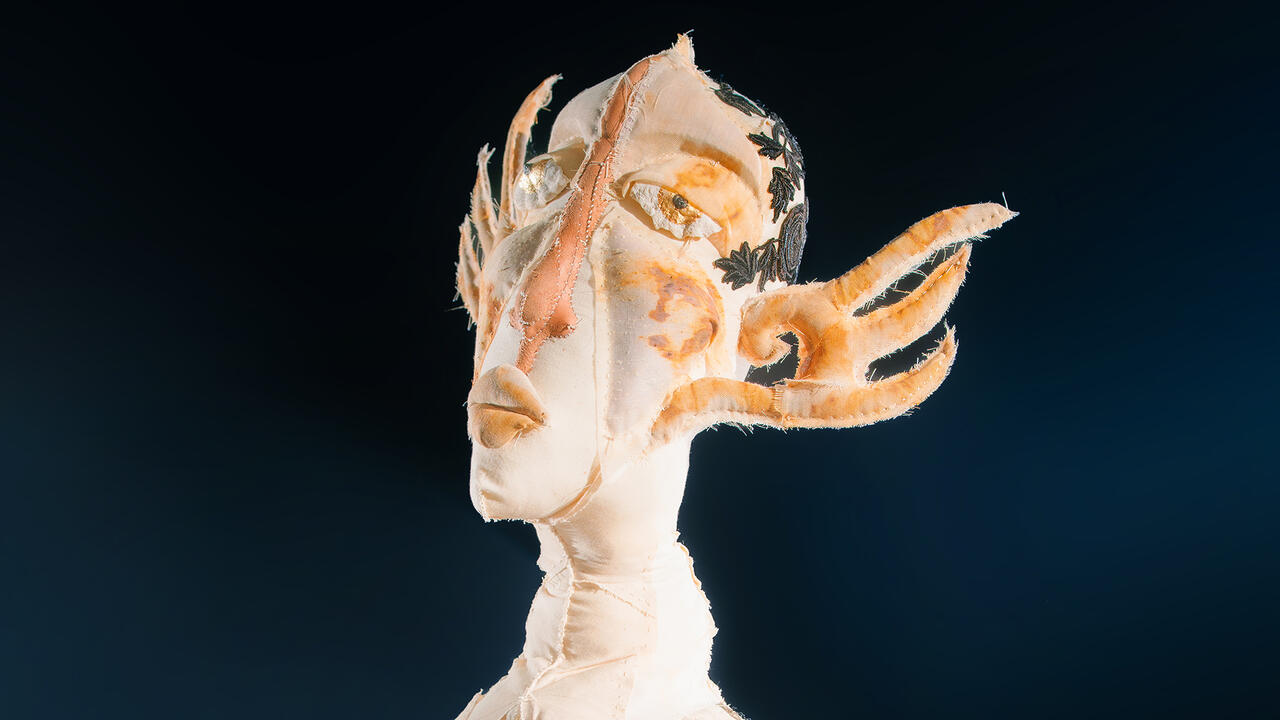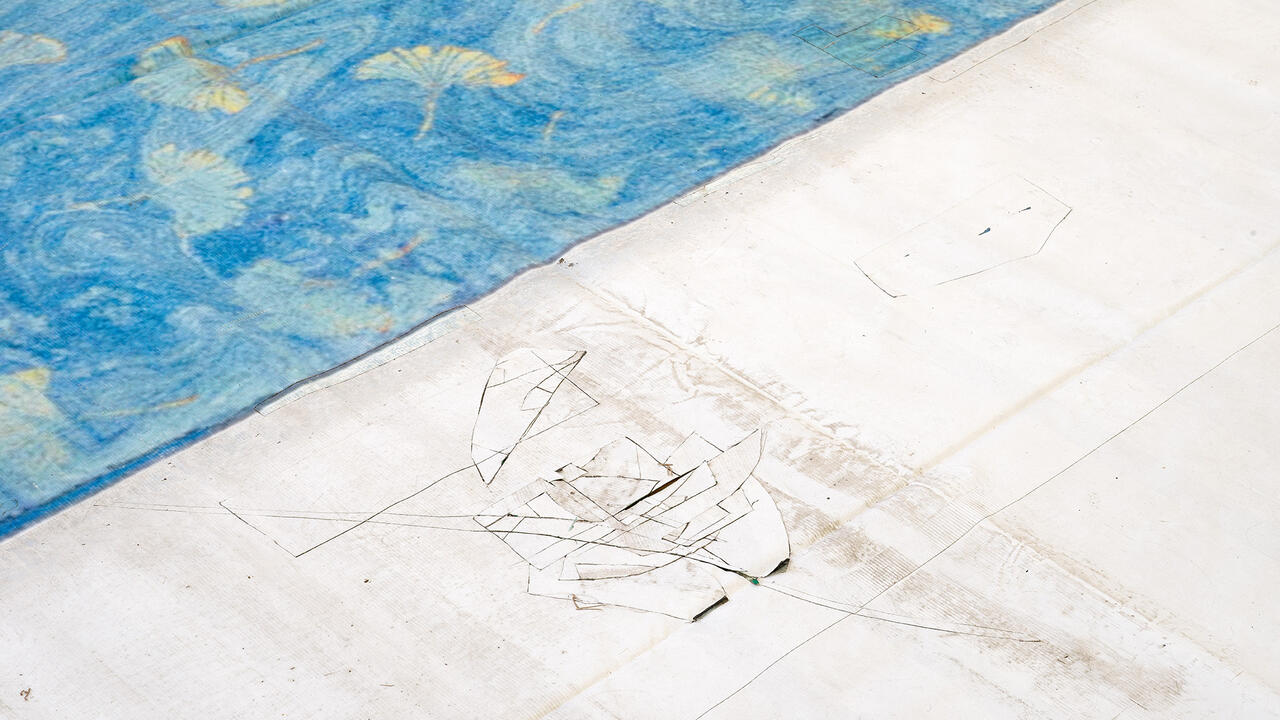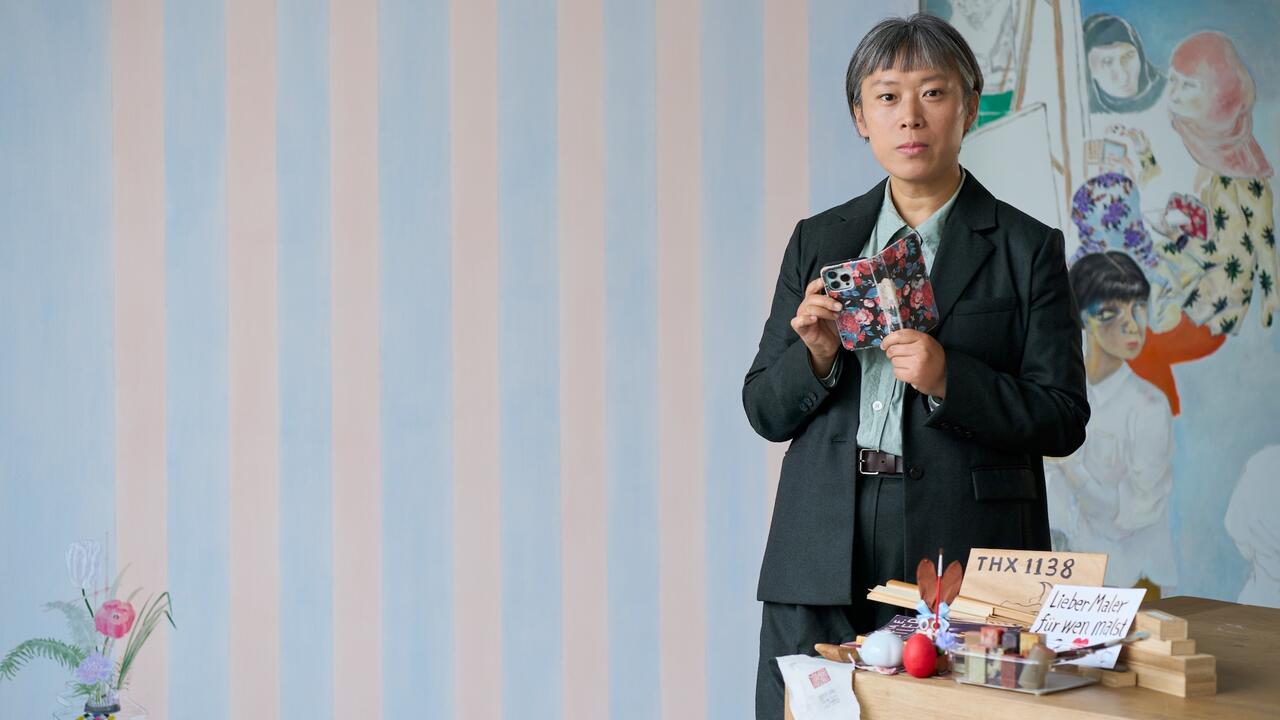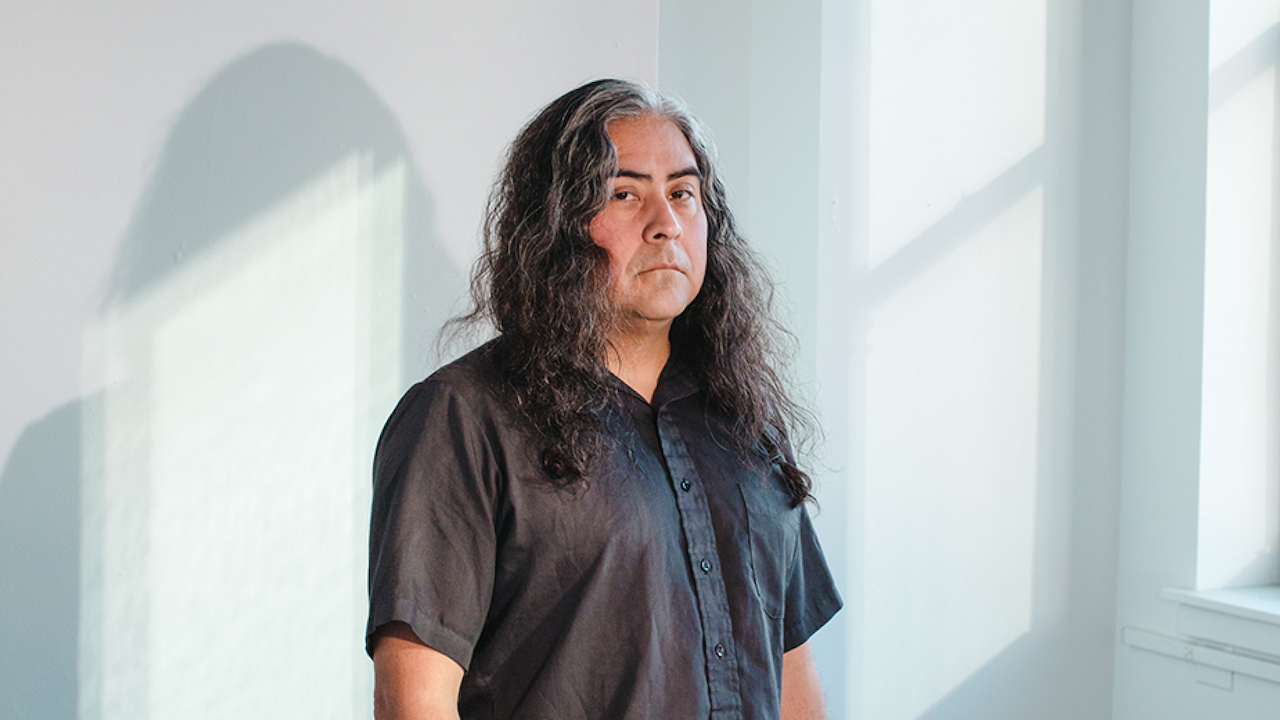Family Trees: Elisabeth Wild and Vivian Suter
frieze senior editor Pablo Larios visits the home of the mother and daughter artists in the Guatemalan highlands
frieze senior editor Pablo Larios visits the home of the mother and daughter artists in the Guatemalan highlands

On our way to visit the artist Vivian Suter in Panajachel, a town on the north shore of Lake Atitlán, where she has lived since 1983, my partner and I stop by a church in the nearby town of Santa Catarina Palopó. At the altar, three women in indigenous clothing are singing a song or prayer of mourning. It is partly in Spanish and partly in Kaqchikel, a Mayan language; the consonance and friction between the two is beautiful, sad.
Behind a black gate on the outskirts of Panajachel, Suter, who is 70, leads us through the grounds to her home, weaving amongst shadowed pathways, wooden sidewalks and gardening shacks. We reach the adjacent house of Elisabeth Wild, her mother, who sits at the desk where she makes her modest-sized collages, one a day. ‘Ach, wir können Deutsch reden!’’ (We can speak German!), exclaims Wild after learning I’ve come from Berlin. At 97, despite a recent illness, she’s quick, with pallid eyes and a presence of bright constancy. I notice in her home a life’s inventory of books, paintings, papers – and, for a moment, we are not in the Guatemalan highlands but in Vienna, where Wild was born, or Basel, where she lived before joining her daughter here in 1996.

Outside, in a patchwork of jungle behind their houses, I spot a large tree: ‘Ceiba?’ I ask Suter, mistaking it for a kapok, with its similarly exposed roots. ‘No, matapalo,’ Suter says – a strangler fig. The tree was the first thing she saw on this former coffee plantation, which made her decide to purchase the land. Over the years, Suter and her mother struggled financially and considered selling Wild’s house; times are now better. The suspense of this place – its flattening of time – is sustained by the thick air of contradiction and extremes: a coffee plantation with almost no coffee; Swiss artists who aren’t from Switzerland; a mother and daughter who function almost like a monad; artists who left Europe to be alone and ended up together; a lakeside house with no view of the lake; remoteness and intimacy at once.
After fending off the huge, playful dogs – Tintin, Bonzo and Sofi – we enter the large living room that is the central chamber of Suter’s house. I make out the decorative elements of her life: a small disco ball; many paintings and drawings, including one large abstract canvas by Suter and several by Wild; gifts from friends, such as puppets, books, drawings and textiles. The dogs roam the room, like lazy sentinels, or lounge on couches covered with colourful fabrics. There are no clocks here and the place feels outside of time.
Lunch starts with a soup of calabaza, or pumpkin, and red wine. Suter’s house is low, mixing shadow and light in the way many Central American houses do, with blood-red walls and teal windows and doors. Skylights and all manner of carpets give the impression of interiority; yet, when the winds course through the many trees outside, you feel exposed. I ask about some of the sprigs that Suter keeps potted in the living room. ‘Vivian has planted over 100 trees,’ Wild says, describing how the place is changed. ‘And she is still planting.’
I mention our visit to the church in Santa Catarina Palopó (‘we know it well’) and say that, from there, the lake and landscape resemble Switzerland. ‘Yes, but with volcanoes,’ Suter adds. There are three volcanoes on the lake plus a smaller lava dome, which is named the Cerro de Oro (Golden Hill) or the Cerro de Saint-Exupéry. Antoine de Saint-Exupéry, like Aldous Huxley and Alexander von Humboldt, passed through the Lake Atitlán region and legend has it that the Cerro de Oro inspired the image of a boa constrictor digesting an elephant on the first page of The Little Prince (1943). Later, I spot a little book about Saint-Exupéry on a round table next to novels by Martin Suter (Suter’s ex-husband, a famous Swiss writer who also lives part-time in Panajachel).

In this remote location, economy – whose Ancient Greek root means ‘care of the home’ – has become the essential artistic question for Suter and Wild: how to do much with little? When asked how she transports her paintings for shows, Suter answers: ‘There’s no post and we don’t have a car. A minibus comes and picks up the paintings in rolls.’ Why does she unstretch the canvases? So she can keep re-using the frame. Suter gets her materials piecemeal, using hardware paint, acrylic and fish glue, bought at the market. ‘I don’t get to see my own shows,’ says Wild, who is in a wheelchair. She likes to use magazines for her collages. How does she get paper? Often as a gift or in the form of art and architecture magazines brought by Stefan Benchoam, their gallerist in Guatemala.
After lunch, Suter and my partner get up to make coffee and, left alone with Wild’s commanding if cordial presence, I pause to observe the different emblems of the many ages congealed in the house. All lives are remarkable but theirs particularly so – three generations of a family living through the great 20th-century extremes: displacement, war, wealth, poverty, escape, survival, obscurity, recognition, high culture and counterculture.
Wild, who was born in 1922, describes first moving to Argentina. The child of a Jewish mother and Catholic father, she and her family left Vienna in 1939 and went to Yugoslavia, then Italy, stopping by Venice, to see it once, in case they never came back. They caught what was supposedly the very last cargo boat from the Netherlands to Buenos Aires, pleading with the captain of the ship to let them on. Wild tells me that she learned to paint from a private tutor there. In their neighbourhood, Belgrano, there ‘were only Jews and Nazis, side by side’. She went into textile design and eventually married August Wild, a Swiss industrialist, in Argentina. In 1962, amid political uncertainty and a civilian coup d’état, they sold the company and relocated to Basel, where Wild set up an antique shop. Suter was 13.

Outside, Suter winces when she sees that a storm has toppled a large palm she planted, which now lies with its roots exposed. We come across a small clearing where I can see her canvases. When Suter’s works are exhibited, they can seem almost wing- or sail-like; they are gestural, garish, reminiscent of the expressive abstractions of the Gutai group or tropicália. But, here, they are in gestation – on the ground, scattered with dirt and leaves. Long, wide washes of blue and teal are soiled, and Suter doesn’t care. Here, it feels perfectly reasonable. Why does she paint outside? ‘Because that way I feel that I’m not missing out on anything.’
Artistic value is increasingly imputed through the transmission of rarity – the painting produced over a decade, the artist who makes and shows little. People are attracted to the remoteness of these lives, but remoteness is a state of mind. Leaving them, I sense that mother and daughter seem more connected than isolated and that their lives have been richer and more prolific than many. Being led out that evening past Wild’s house, I spot her through the window, resting. I have a strong intimation that, while I’m planning to see Suter in Europe soon afterward, this will be the last time I’ll ever see Wild. Sadly, within a few weeks, this prediction bears out. And now, thinking of the women at the altar in Santa Catarina Palopó – perhaps they were singing for her.
This article first appeared in frieze issue 210 with the headline ‘Family Trees’.
Main image: Vivian Suter’s studio, Panajachel. Courtesy: the artist and Gladstone Gallery, New York and Brussels; photograph: David Regen





















